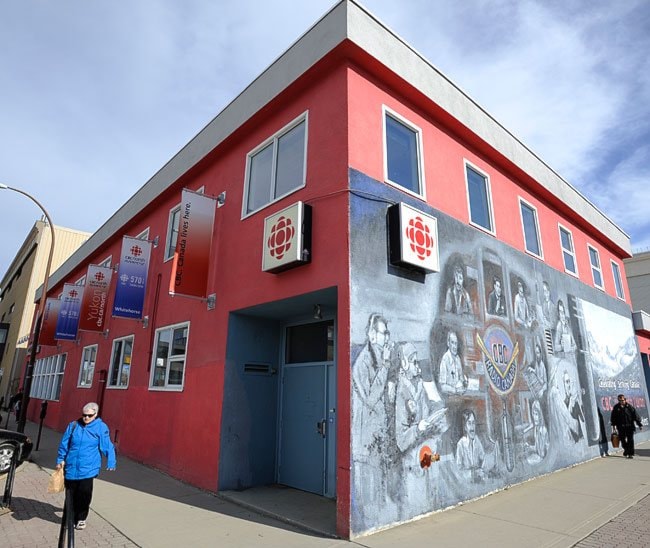CBC Radio One has begun the switch from AM to FM in Whitehorse.
Starting today, the station will be broadcasting on 94.5 FM. On Sept. 1, the AM signal will go silent after more than five decades on the air.
The change means residents on the outskirts of town - particularly those who live near Lake Laberge - will lose their ability to tune into the public broadcaster.
These changes, first announced in 2009, have been protested by Laberge residents to no avail. The AM tower is being demolished to make way for the new Whistle Bend subdivision.
“We are certainly aware that this is a smaller footprint, and we’re very conscious of the fact that this could cause some difficulties for some listeners,” said Janice Stein, the managing director of CBC North.
That’s because the FM signal is “line of sight.” If you can’t see the tower, you can’t get the signal.
An AM signal - which works by modulating the amplitude of the signal itself - has the ability to bounce off the Earth’s ionosphere, allowing it to travel much farther distances.
“AM signals can travel in kind of unusual ways sometimes,” said Stein. “It can go along a hydro line, go along a rail line.
“It can spread out and goes where you don’t expect it to.”
FM signals, which work by modulating the frequency, pass right through the ionosphere and out into space.
The big advantage of FM is its superior sound quality. That’s because the signal is not affected by small changes in amplitude - changes that result in static on the AM band.
Scrapping the AM band wasn’t the CBC’s first choice, said Stein.
“We looked at several options, including finding another site to build an AM transmitter,” she said. “Unfortunately the sites that are available to do that would be prohibitively expensive.”
The price tag for building a new tower was over $1 million, she said.
In the end, the corporation decided to add an FM transmitter to its tower on Grey Mountain already used for its television broadcast.
Although people in the rural outlying areas around Whitehorse will no longer be able to get CBC Radio, there are some areas within Whitehorse that currently can’t get AM reception, but will be able to tune in to the new FM band, said Stein.
And the quality of the signal overall will be “dramatically improved,” she added.
It’s likely that there will be some areas of the city where tuning might be difficult. CBC technicians have already identified some areas in Takhini where it will be a problem, said Stein.
The plan is to install a filler transmitter to boost the signal in that area. But there could be other areas that have problems getting reception.
“Our technical team will be out monitoring where the signal’s going, but people can help too by letting us know,” said Stein.
Anyone who experiences problems should call the audience relations line at 866-306-4636.
“If there is an adjustment to make in how the signal travels it’s going to be important that people let us know, so that if there are gaps there we can address them,” she said.
Contact Josh Kerr at
joshk@yukon-news.com
